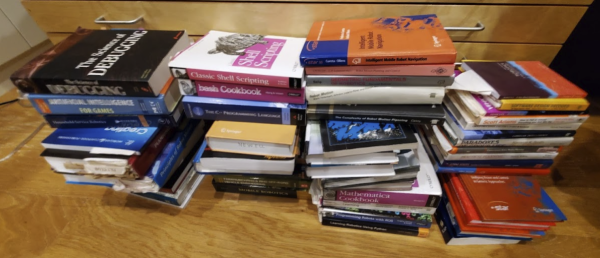
SO part of the reason we moved from California (other than the fires and the burning and the lack of water falling from the sky and all that stuff) to South Carolina was to reduce friction. Since here we can afford a house that has, like, floor area, my wife gets a big art studio on one end (spoiler: it’s not enough – she’s taken over the garage and living room too) …
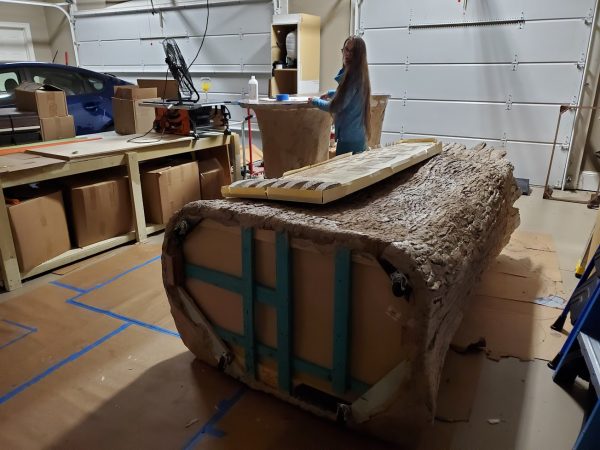
… and I get a big library at the other. In that library, I’ve been trying to remove creative barriers to all my different projects, which started me on the Drawing Every Day series earlier, and has been very helpful for research on my fiction and my science. One of those friction-reducing tools is a floating bookcase:
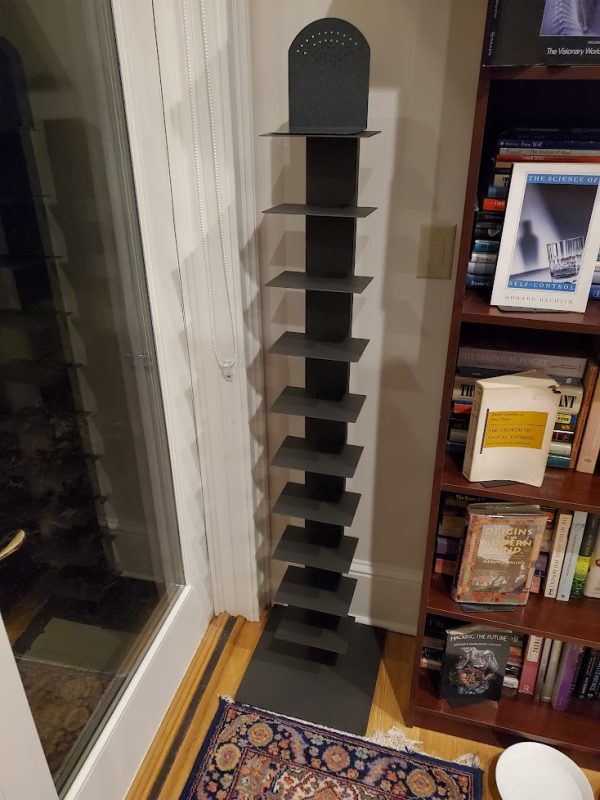
I got one of these from the Container Store to organize a set of books I had collected at work related to robot navigation (pictured up top), and since the piece of software that controls a navigating robot is called a “navigation stack”, and it was a stack of books about navigation, hence, it is my, um, “navigation stack”. (Hey, I never said it was a particularly clever nickname).
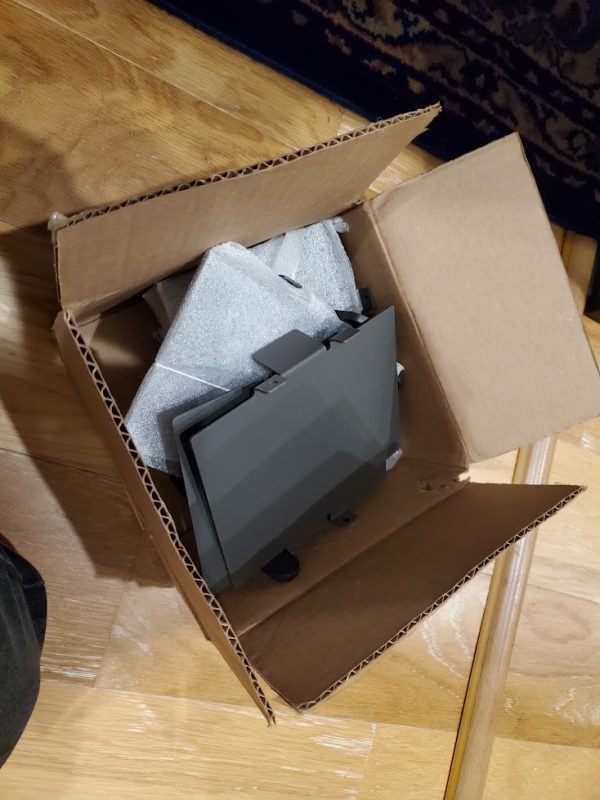
These have proved super useful to pull all the books on a given topic into a prominent place so it is easier to see, think about, and find them. I’ve been doing that to all the topics in my library just by organizing, but it is really useful to have some things much more clearly visible to kickstart that process.
During the pandemic, I ordered another one, but they shipped it without its heavy, sturdy metal base. Rather than give me a replacement base, they sent me an entire new floating bookcase – which was great, mind you, but that left me with the bunch of weird shelves above and the bookcase’s long spine.
We’re all about recycling here at the Boobie Hatch, so I started thinking about how to salvage these pieces and make a whole nother shelf. Unfortunately, the hard metal base is a carefully machined component. How to make a sturdy shelf when I don’t have the ability to make what’s arguably the most important piece?
Enter power tool girl.
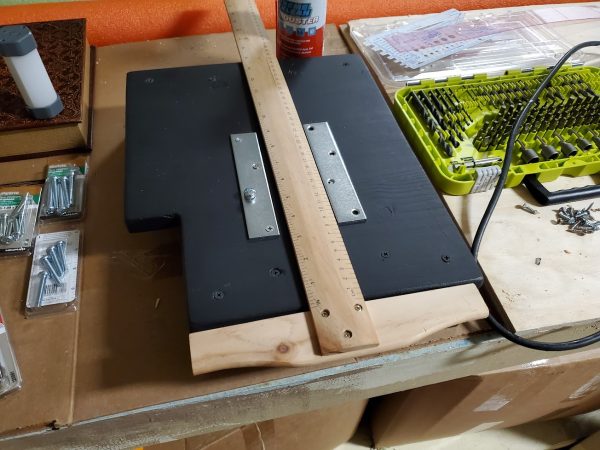
Sandi and I have a great working relationship: I know how to design sturdy, offbeat pieces of office furniture, and Sandi has the woodworking tools to turn more of those designs into reality than I am able to do myself. After discussing it, measuring the quirky space it would have to go into, and designing the overall concept together, she cut the above wood to shape and painted it for me to match the other furniture.
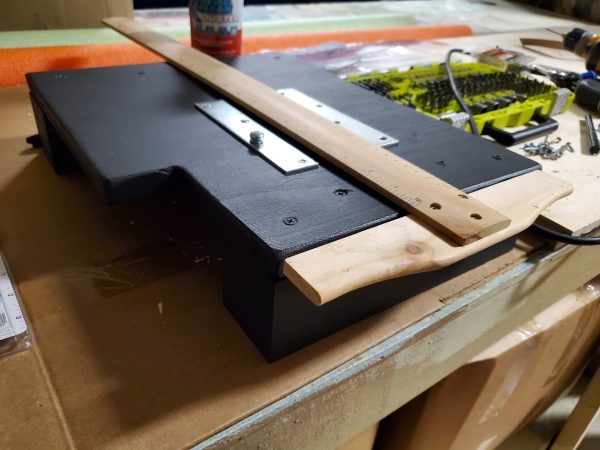
Here I come back in. Often these pieces have something weird about how to put them together, and I take over the last mile of construction, using my careful, patented “measure several times, cut once, curse when it doesn’t fit, then re-measure and re-cut again while grumbling under my breath” technique.
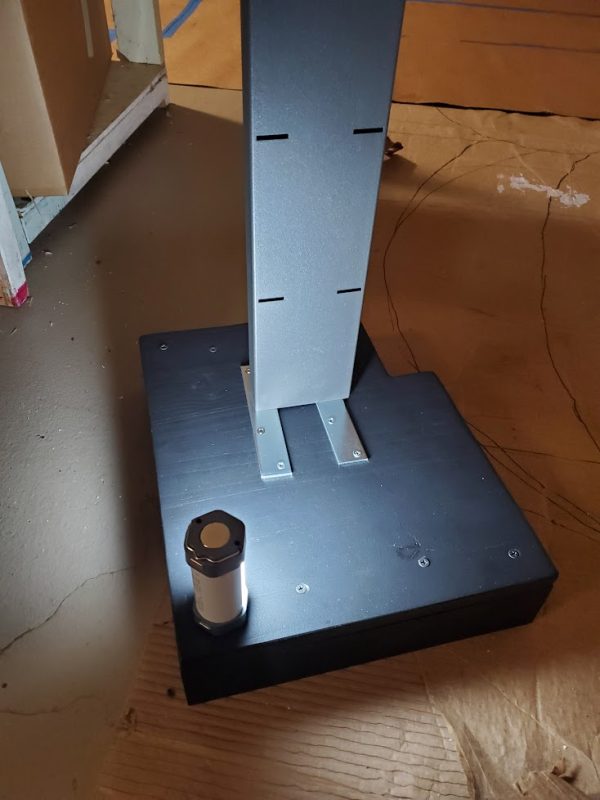
Getting this to work was tricky, because we had to ensure two kinds of stability. The spine of the shelf is a rectangular metal tube, designed to firmly bolt into a heavy metal plate to make sure the shelf stays upright; the edges of this tube would cut straight into an ordinary piece of wood, causing the shelf to sway over time. On top, we used two carefully aligned strips of metal to prevent the spine from cutting into that wood …
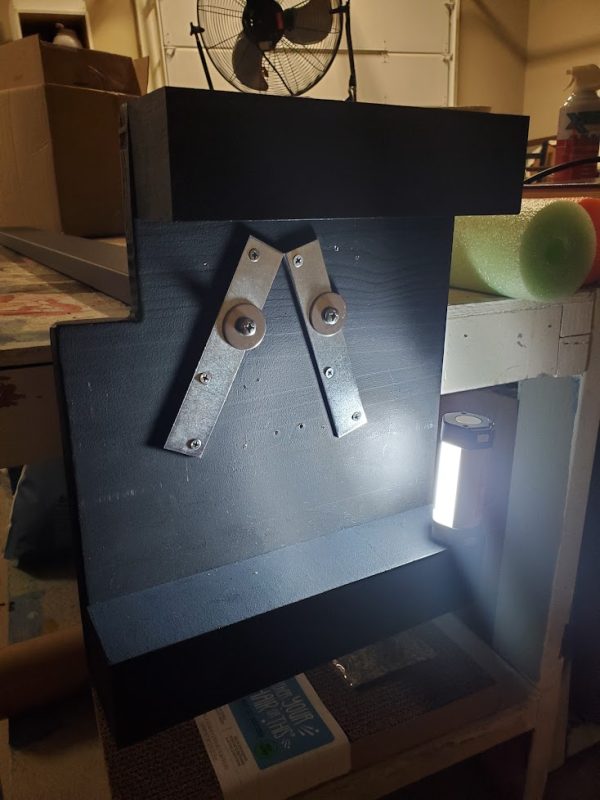
… and on the bottom, we have two not quite so prettily aligned strips of steel, set at off angles so the screws do not collide with the ones coming from above (and are not co-linear, potentially causing splits in the wood). If I remember my geometry, these will prevent the bolts from pulling all the way through the wood. The result is a shelf that stands upright and is reasonably stable:
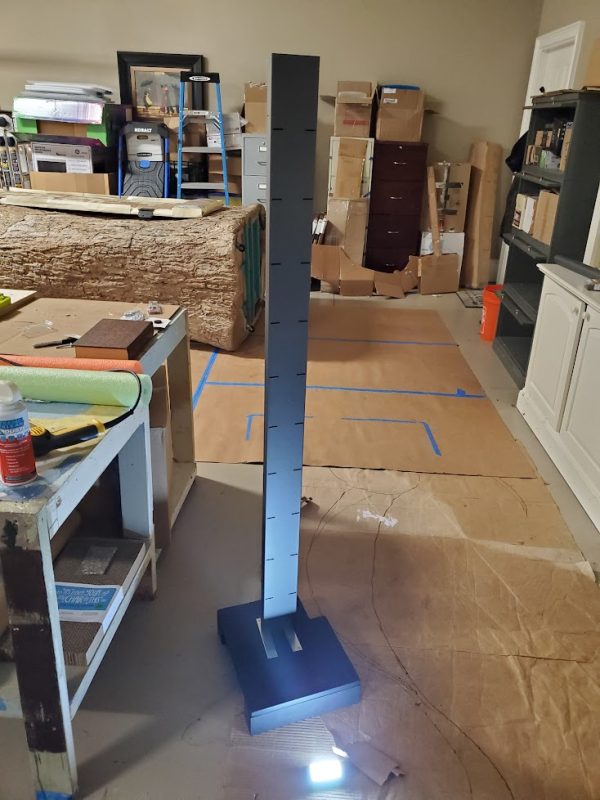
You may have been wondering what that weird notch is in the bookcase, and why the feet are so big.
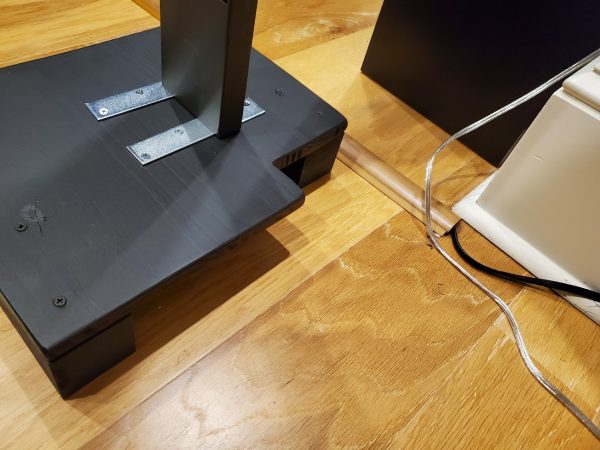
The answer is this weird corner of the library, where a room divider and power cable can’t be moved …
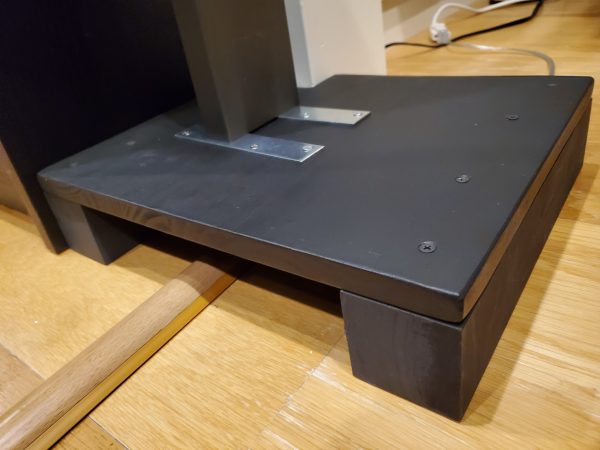
… but a shelf can be designed and cut to fit. A small block of wood hides underneath there, to provide extra stability under the shelf; also we added felt so the floor would not get scuffed (though the wood the previous owners chose already looks pre-scuffed; go figure).
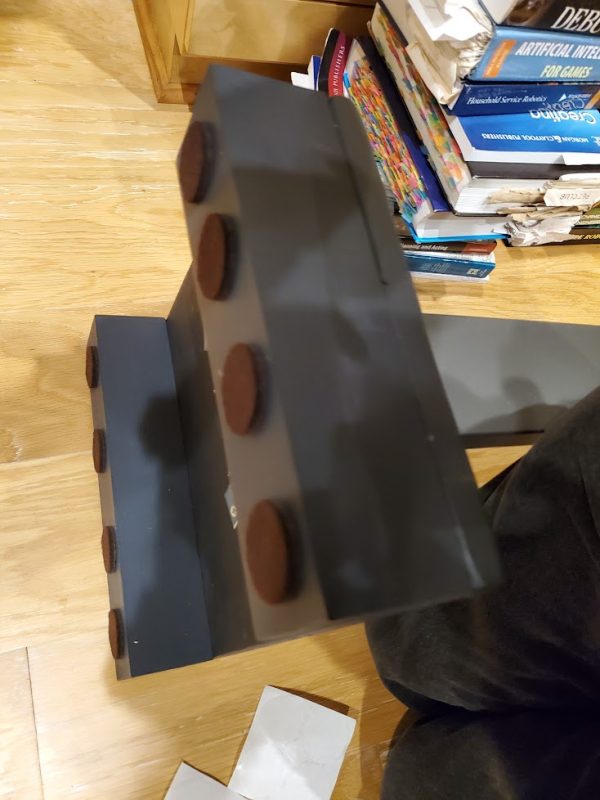
Now the shelves can be added back in …
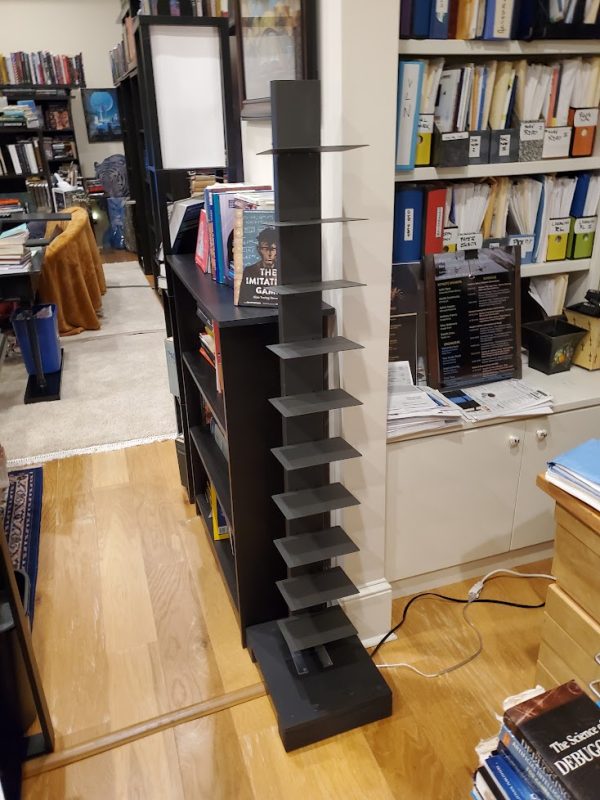
… and then, the books!
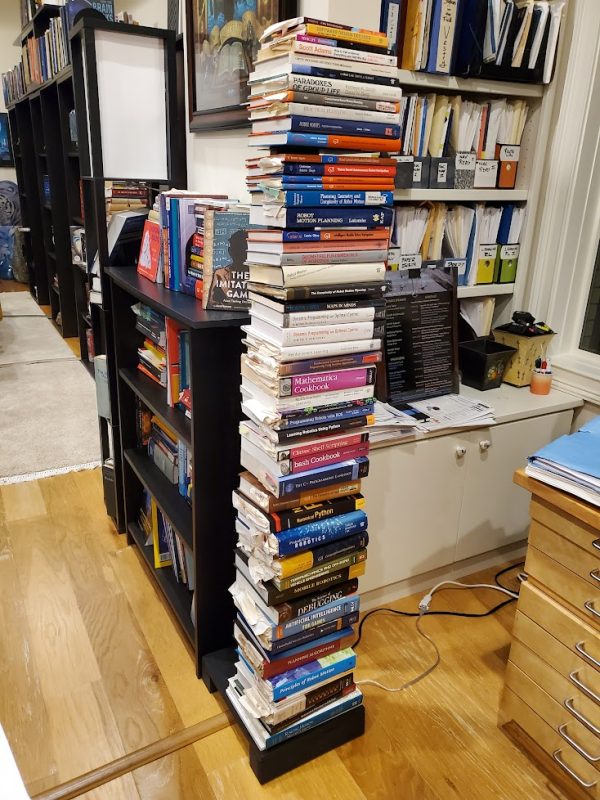
The navigation stack is reloaded!
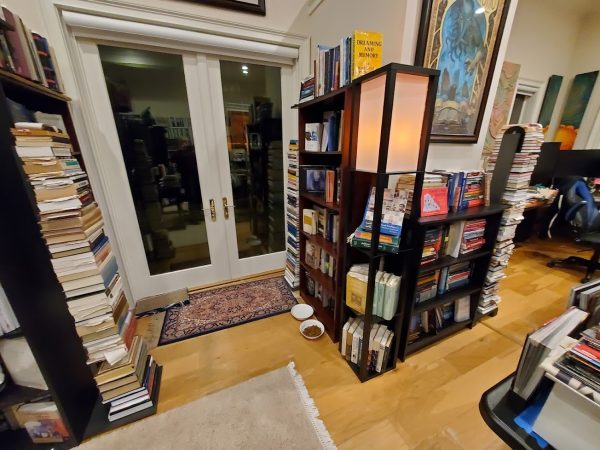
Now I have three much more topical collections of books, far better organized and discoverable. (The three collections are Thomistic philosophy, consciousness, and the navigation stack; these are sandwiching bookshelves on AI, deep learning, free will and executive control, and sleep and dreaming, among others; all these topics are far more related than at first they appear, but more on that later).
One more project down.
1001 to go!
-the Centaur